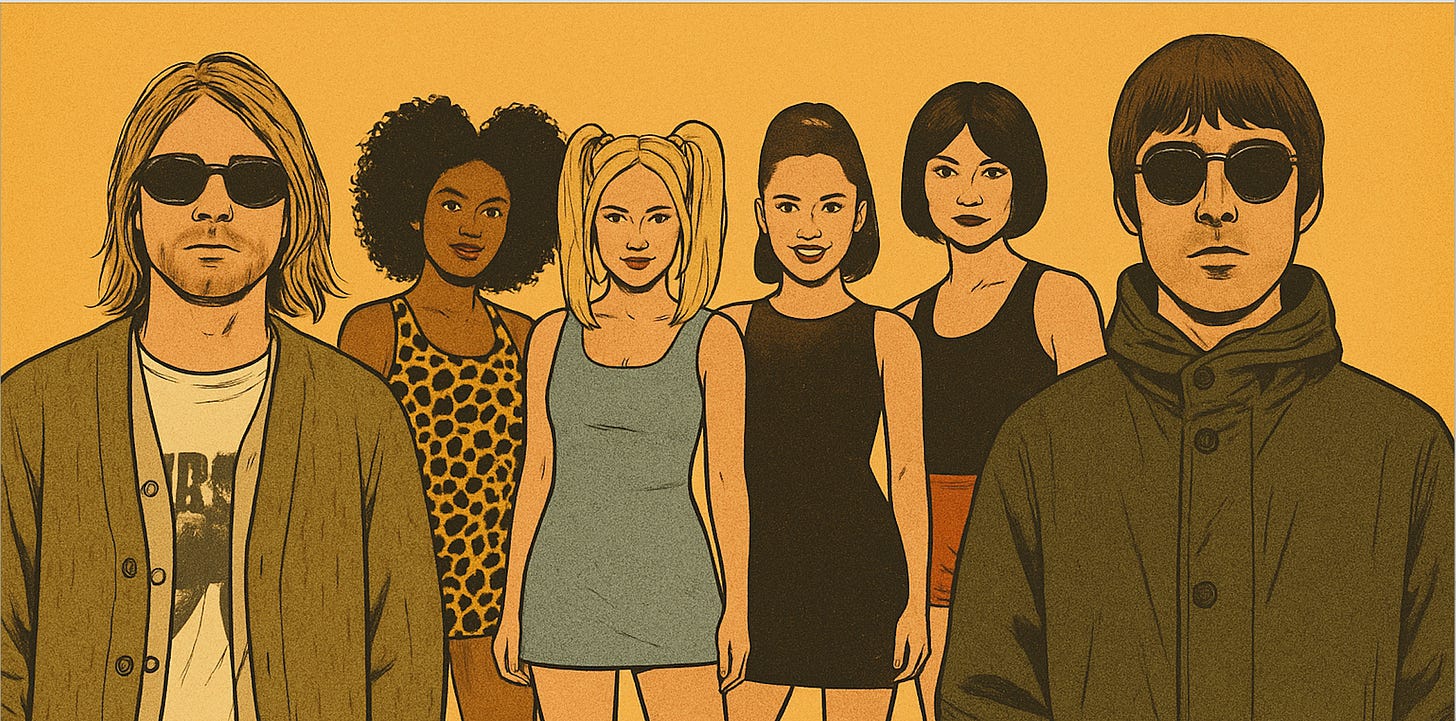What MTV taught me about selling music
Here's what the music industry figured out in the 90s that most marketers still miss:
People don't buy products. They buy uniforms.
Not the kind with badges and epaulettes. The kind that signal to everyone else exactly who you've chosen to be.
When Kurt Cobain threw on that thrift store cardigan, he wasn't making a fashion statement. He was creating a uniform. One that said, "I reject your polished, mainstream world." And suddenly, millions of teenagers had a way to wear their rebellion.
Same with the Spice Girls. They didn't just make pop music - they created five distinct uniforms of identity. Pick your persona. Wear it proudly. Show the world.
The Britpop bands? They handed working-class kids a uniform that said, "I'm proud of where I come from." The parka wasn't just a jacket. It was a flag.
Here's the thing about uniforms: they only work when everyone else can see them.
I learned this firsthand working in Music Programming at MTV. We weren't just playing videos - we were broadcasting uniforms. Every rotation of "Smells Like Teen Spirit," every Spice Girls premiere, every Oasis clip was showing millions of kids exactly what they could wear to signal who they were.
The uniform had to be visible, recognizable, and shareable. Otherwise, what's the point?
Most musicians today are still trying to sell feelings. "My music will make you feel something!" But feelings are private. They're internal. They don't do the work.
Identity is public. It's external. It broadcasts.
The question isn't whether your fans love your music. The question is whether they're willing to be seen loving your music.
Because if they're not willing to wear the uniform - literally or figuratively - then you're not creating identity. You're just making songs.
And songs are forgettable.
Uniforms? Uniforms change the world
.


